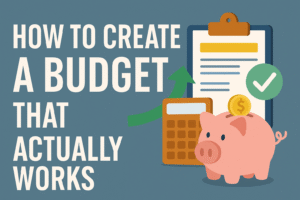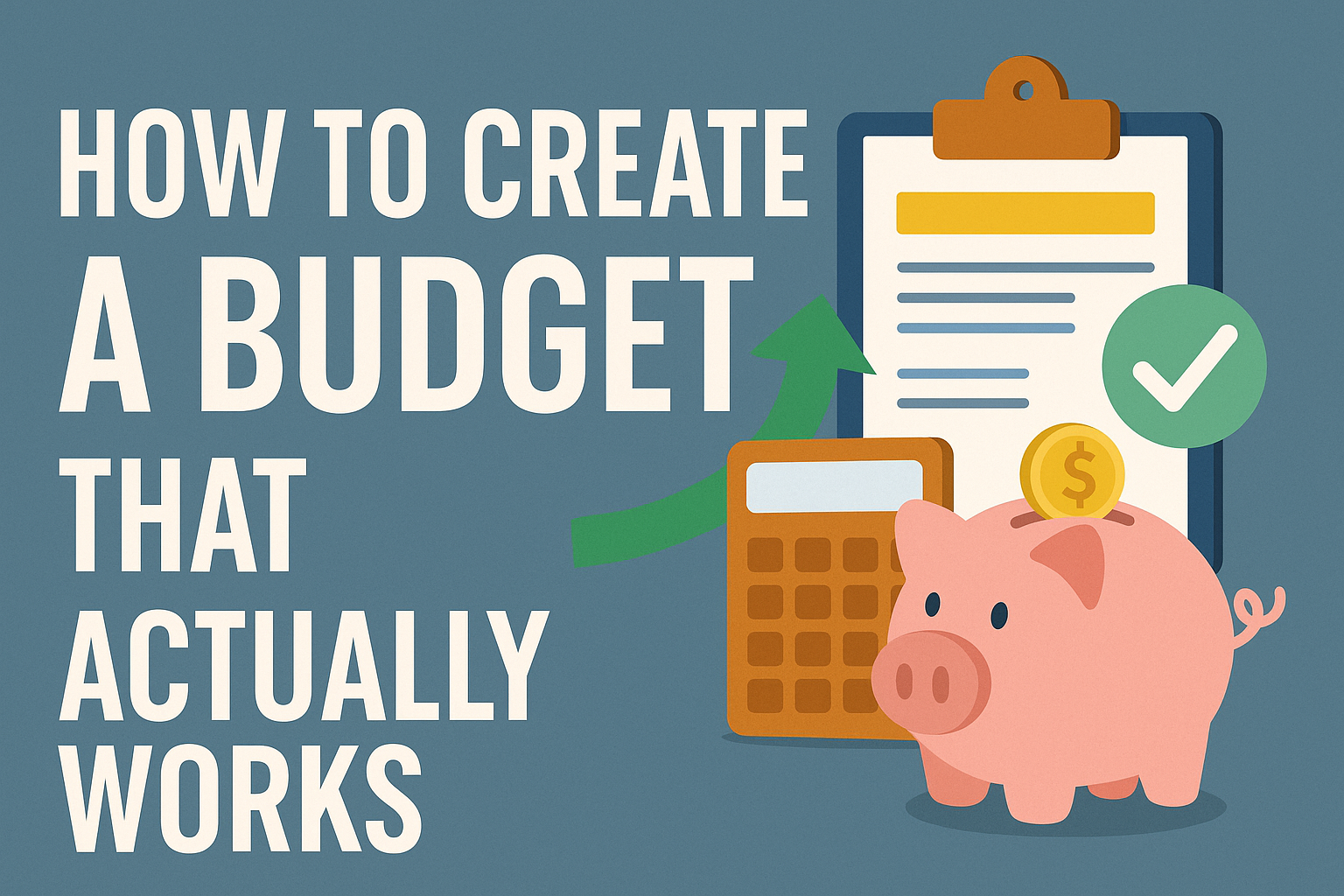How to Create a Budget That Actually Works
How to Create a Budget That Actually Works
Are you tired of living paycheck to paycheck?
You’re not alone. Millions of people struggle with managing their finances—mostly because they’ve never learned how to build a realistic budget.
The good news? Creating a budget that actually works isn’t rocket science. With the right approach, anyone can start saving money, reduce stress, and take control of their financial future.
In this guide, we’ll walk you through every step to make a simple, effective budget—even if you’ve never done it before.

Why Budgeting Is So Hard (and Why It Doesn’t Have to Be)
Let’s be real: budgeting sounds boring. It feels restrictive. But the truth is, a good budget isn’t about saying “no” to everything—it’s about saying “yes” to what actually matters.
The key problem? Most people either don’t track their spending or they set unrealistic expectations that collapse in a week. We’re fixing that today.
Step 1: Track Your Income and Expenses
Before you can plan where your money should go, you need to know where it’s already going.
Start by tracking:
- Your total monthly income (after taxes)
- Your fixed expenses (rent, utilities, phone, subscriptions)
- Your variable expenses (groceries, eating out, transport)
Use Apps or Spreadsheets
Some great tools to help you:
- Mint (free, automatic tracking)
- YNAB (You Need a Budget) (paid, detailed planning)
- Google Sheets (DIY and fully customizable)
Step 2: Set Realistic Financial Goals
Why are you budgeting in the first place?
Maybe it’s to pay off debt, build an emergency fund, or save for a trip. Whatever the reason, defining clear goals will keep you motivated.
Short-Term vs. Long-Term Goals:
- Short-Term: Save $500 for emergency, pay off credit card, reduce spending
- Long-Term: Buy a home, invest for retirement, start a business
Write them down. Budgeting without goals is like driving without a destination.
Step 3: Choose a Budgeting Method
There’s no one-size-fits-all budget. Here are two popular (and effective) methods:
The 50/30/20 Rule
- 50% of income → Needs (rent, food, bills)
- 30% → Wants (shopping, fun, dining out)
- 20% → Savings & Debt Repayment
Great for beginners and simple to follow.
Zero-Based Budget
Every dollar is assigned a job—whether it’s spending, saving, or investing.
At the end of the month, income minus expenses = $0 (but not $0 in your bank).
This is perfect for people who want detailed control over every dollar.
Step 4: Review and Adjust Monthly
Life changes. So should your budget.
Take 30 minutes at the end of each month to:
- See what went over budget
- Adjust categories if needed
- Celebrate wins (yes, even small ones)
Common Budgeting Mistakes to Avoid
- ❌ Guessing your expenses
- ❌ Not accounting for irregular costs (birthdays, holidays, car repairs)
- ❌ Trying to be too perfect (perfectionism = failure)
Final Thoughts: Building Habits That Stick
A budget is not a punishment—it’s a plan for freedom.
Start small, be consistent, and don’t beat yourself up if you mess up one month.
With time, your budget will become second nature—and your bank account will thank you.
Quick Recap
| Step |
Action |
| 1 |
Track your income & expenses |
| 2 |
Set clear goals |
| 3 |
Choose a budgeting method |
| 4 |
Review monthly |
Want more?
Follow our blog for more easy, actionable financial tips every week!
👉 Next read: Top 10 Budgeting Apps in 2025 (Free & Paid)



